Page 249 of 312

,....,
N ,....,
N
0 J:
'SI: ,...., \!) 1.1"1 ,...., 1.1"1 ,....,
Tires and wheels 24 7
Gross Vehicle Weight Rating ("GVWR") Ply
means the maximum total loaded weight of
the vehicle .
Groove
means the space between two adjacent tread
ri bs.
Load rating (code)
means the maximum load that a tire is rated
to carry for a given inflat ion pressure . You
may not find this informat ion on all tires be
cause it is not requ ired by law.
Maximum load rating
means the load rating for a t ire at the max i
mum permissible inflation pressure for that
tire .
Maximum loaded vehicle weight
means the sum of:
(a) Curb weight
(b) Accesso ry weight
(c) Vehicle capacity weight, and
(d) Production opt ions we ight
Maximum (permissible) inflation pressure
means the maximum co ld inf lation pressure
to which a tire may be inflated . Also called
"maximum inflation press ure."
Normal occupant weight
means 150 lbs . (68 kilograms) times the
number of occupants seated in the vehicle up
to the tota l seating capacity of your vehicle.
Occupant distribution
means distribution of occupants in a veh icle.
Outer diameter
means the overall diameter of an inflated new
tire .
Overall width
means the linear distance between the exteri
ors of the sidewalls of an inflated tire, includ
ing e levations due to labeling, decorations, or
protective bands or ribs. means a layer of
rubber-coated parallel cords.
Production options weight
means the combined weight of those installed
regular production opt ions we ighing over 5
lbs. (2.3 kg) in excess of those standa rd items
which they replace, not previously considered
in curb weight or accessory weight, including
heavy duty brakes, ride levelers, roof rack,
heavy duty battery, and spec ial trim.
Radial ply tire
means a pneumatic tire in which the ply cords
that extend to the beads are laid at substan
tially 90 degrees to the centerline of the
tread.
Recommended inflation pressure
see ~ page 246, Cold tire inflation pressure .
Reinforced tire
means a tire design to operate at higher loads
and at higher inflation pressures than t he cor
responding standard tire. Reinforced tires
may be identified as "XL", "xl", "EXTRA LOAD",
or "RF" on the sidewal l.
Rim
means a metal support for a tire or a t ire and
tube assembly upo n which the tire beads are
seated .
Rim diamete r
means nominal diameter of the bead seat. If
you change your wheel s ize, you wi ll have to
purchase new tires to match the new r im di
ameter .
Rim size designation
means rim diameter and width.
Rim width
means nominal distance between rim flanges.
Sidewall
means that portion of a t ire between the
tread and bead .
•
•
Page 250 of 312

248 Tires and wheels
Speed rating (letter code)
means the speed at wh ic h a tir e is des igned to
be d riven for extended per io d s of t ime. The
ratings range from 93 mph (150 km/h) to
186 mph (298 km/h)
¢ page 257. You may
not find this in format ion on all tires because
it is not required by law.
The speed rating letter code, w here a pplica
b le, is molded on the tire s idewa ll and indi
cates the maxim um permissible road speeds
¢ &. in Winter tires on page 261.
Tire pressure monitoring sy stem*
means a system tha t d etects when one or
mo re of a vehicle's t ires are under inflated and
i llum inates a low t ire p ress ure warn ing te ll
tale.
Tread
means t hat port ion of a tire tha t comes into
con tact w it h t he road.
Tread separation
means pull ing away of the t read from the t ire
car cass .
Treadwear indicators (TWI)
means t he projections withi n the pr inc ipal
g rooves designed to give a v isua l ind ication of
the deg rees of wea r of the tre ad . See
¢
pag e 255, Tread W ear Indicator (TWI) for
mo re inf ormat io n on measu ring tire we ar.
Uniform Tire Quality Grading
is a tire i nfo rmation system developed by the
United States Nat io nal Highway Traffic Safety
Admin istration (N HTSA) that is designed to
h e lp buye rs make re lative compa risons among
tires. The UT QG i s no t a safety r ating and no t a
g uar antee t hat a t ire will las t fo r a presc ribed
n umber of m iles (kilome ters) or pe rform in a
certain way. It s imply gives ti re bu ye rs addi
tional information to combine with other con -s
iderations, such as p rice , brand loya lty and
dealer recommendations. Un der UTQ G, tires
are grade d by the t ire manufacturers in three
areas : treadwea r, traction, and temperature
resistance. The UTQG informat ion on the tires,
molded into the sidewalls .
U.S. DOT Tire Identification Number (TIN )
This is the tire's "se ria l numbe r" It begins
with the letters "DOT" and ind icates that the
t ire meets all federa l standards . The next two
numbers or letters ind icate the plant where it
was ma nufactu red, and the last four numbe rs
r eprese nt the week and year of ma nufact ure.
Fo r exampl e,
DOT ... 2214 ...
means that the tire was produced in t he 22nd
wee k of 2014. The ot her numbers are market
ing codes that may or may not be used by the
t ire manufacturer. This information is used to
contact consumers i f a tire defect requires a
r ecall .
Vehicle capacity weight
means the rated cargo and luggage load plus
150 lbs. (68 k ilograms) times the vehicle's to
ta l seating capacity as listed on the label lo
cated on the driver's side B-pilla r.
Vehicle maximum lo ad on the tire
means that load on an individua l tire that is
determined by distributing to eac h axle its
share of the maxim um loaded vehicle weight
and divid ing by two .
Vehicle normal load on the tire
means that load on an individua l t ir e that is
determined by distributing to eac h ax le its
share of the curb weight, accessory weight,
and normal occ upant weig ht (d istr ibuted in
accorda nce wit h tab le below ¢
page 249)
and divid ing by two .
Page 251 of 312

.... N .... N
0 J:
"". .... I.O
"' ....
"' ....
Tires and wheels 249
Occupant loading and distribution for vehicle normal load for various designated seating
capacities Designated seating capacity, Vehicle normal load, number Occupant distribution in a nor-
number of occupants of occupants mally loaded vehicle
4 2 2
in front
5 3 2 in front, 1 in back seat
Cold tire inflation pressure
Tire pressure affects the overall handling, performance and safety of a vehicle.
Fig. 208 Tire pressure label: located on driver 's side B
pillar
Tire pressure generally refers to the amo unt
of air in a tir e that it needs it to do its job and
safely carry the combined load of the entire
vehicle and its contents . Tire pressure is
measured in kilopascals (kPa), the interna
tional measuring unit and in pounds per
squa re inch (PSI). Tire pressure is based in
part on the vehicle's design and load limit -
the greatest amount of weight that the vehi
cle can carry safely and the tir e size. The prop
er tire pressure is frequent ly referred to as the
"recommended cold tire inflation pressure ."
Air in the tires expands when the tire heats up
because of internal friction when it flexes in
use. The tire p ressure is higher when the tire
has warmed up than when it is "cold." It is the
inflation pressure in a "cold" tire that counts.
Therefore, you should never let air out of a
warm tire to match "cold tire inflation p res
sure" recommendations. The tir es would then
be underinflated and could fail suddenly .
Maintaining proper tire pressure is one of the
most important things you can do to help
avoid sudde n tire failure . Underinflated tire s
are a major cause of sudden tire failure. Keep
in g tires at the right pressure is also impor-
-"' --~ -- ,e
• (:::=~. ~: I =: I :,.. I)( ::: ) l3 n,........,..,.__...,~ ........ ....,_...... • ... _ .. , ....................................... ..,_ "" ..
-""u
--
-...........
- KPA. a PS I
- KPA.
a PSI
-KPA. a PSI
Fig. 209 Tire pressure label
tant for safe and respons ive ve hicle hand ling,
traction, braking and load carrying.
Tire pres
sures are particularly important when the
vehicle is being driven at higher speeds, and
then especially when heavily loaded even
within the permissible load-carrying capaci
ties approved for your vehicle.
The recommended tire pressures for your Audi
depend on the kind of tires on your vehicle
and the number of passengers and/or amount
of luggage you will be transporting.
The tire pressure label is located on the driv
er's side B-pillar. The tire pressure labe l lists
the recommended cold tire inflat ion pressures
for the vehicle at its maximum capacity
weight and tires that were on your veh icle at
the time it was manufactured.
If you wish to improve comfort when operat
ing the vehicle at normal load (up to 2*/3
occupants), you can adjust tire pressures to
those specified for normal vehicle load. Be
fore operating the vehicle at maximum load,
you must increase the tire pressures to those specified for maximum vehicle load
¢ ,&. . IJi,,-
Page 252 of 312

250 Tires and wheels
Bear in mind that the tire pressure monitoring
system* can only monitor the tire pressures
you have stored . The system does not recog
nize the load condit ion of your vehicle.
The effectiveness of the tire pressure monitor
ing system* will be impaired if you store nor
mal load pressures but then operate the vehi
cle at its max imum load
c:> &. .
See the illustration c:> fig. 208 for the location
of the label on driver's side B-pillar (color of
the act ua l label and exact location on the ve
hicle will vary slightly). Note
that the following table is accurate at
the time of going to press and is subject to
change. In the event of d iscrepancies, the t ire
pressure label is located on the driver's side B
pillar always takes precedence.
The table below lists the recommended cold
t ir e inflation pressures for the Audi mode l
covered by your Owner's Literature at the vehi
cle's capacity weight and the t ire sizes instal
led on the respective models as orig inal
equipment, or as a factory opt ion.
Tire pressure
Model/En- Tire designation normal load condition full load condition
gine fronta> reara>
front rear
PSI kPA
PSI kPA PSI kPA PSI kPA
A8/A8 L: 235/55 R18 104H
35 240 32 220 36 250 38 260
3.0 liter
255/45 R19 104H 35 240 32 220 36 250 38 260
6-cylinder
265/40 R20 104H 35 240 32 220 36 250 38 260
265/40 R20 104V 33 230 32 220 33 230 35 240
275/35 R21103Y XL 35 240 32 220 36 250 35 240
A8/A8 L: 235/55 R18 104H 35 240
32 220 38 260 38 260
4.0 liter
255/45 R19 104H 35 240 32 220 38 260 38 260
8-cylinder
265/40 R20 104H 35 240
32 220
38 260
38 260
265/40 R20 104V 33 230 32 220
35 240 35 240
275/35 R21103Y
XL 35 240
32 220
38 260
38 260
ASL
: 265/40 R20 104V 35 240 32 220 36 250 35 240
6.3 liter
255/45 R19 104H 36 250 32 220
39 270
38 260
12-cylin-
265/40 R20 104H 36 250 32 220 39 270 38 260
der
275/35 R21103Y XL
35 240 32 220 36 250
35 240
58: 265/40 R20 104V 36 250 32 220
39 270 38 260
4.0 liter
265/35 R21101 Y 39 270 35 240 44 300 42 290
8-cylinder
275/35 R21103Y XL 39 270
35 240
44
300 42
290
XL= reinforced or extra load tire. It may also appear as xl, EXTRA LOAD, or RF on the tire side-
wall.
al n orma l lo ad co ndi tio n~ page 249.
The correct tire pressure for the spare wheel is
locat ed on a label on the driver's side B-pillar.
Because technical changes may be made to
ve hicl e equipment during the model year, al
ways compa re the tire size designation on the tire
pressu re lab el on your vehicle wi th the
tires on your vehicle. Make sure that the tire
s iz e inform ation on the vehicle label is the
same as the size of the tires on the vehicle.
This is espec ially important if the vehicle be-
l ongs to someone e lse or yo u bought the ..,.
Page 253 of 312

.... N .... N
0 J:
'SI: .... \!) er,
.... er, ......
vehicle with different rims/tires or you bought
the vehicle as a previously owned vehicle.
Remembe r, your safety and that of yo ur pas
sengers also depends on mak ing s ure that
l oad limits are not exceeded . Vehicle load in
cludes everybody and everything in and on the
veh icle. These load limits are technically refer
red to as the vehicle's Gross Vehicle Weight
Rating ("GVWR"). The Gross Axle Weight Rat
ing (''GAWR") is the maximum load that can
be appl ied at each of the veh icle's two axles .
The Gross Vehicle Weight Rating and the
Gross Axle We igh t Rating a re listed on the
safety compliance s ticker labe l located on the
d river's side 8-p illa r. T he tire pressure label on
your Audi lists the maximum combined weight of all of the occupants and luggage or
other cargo that the vehicle can carry. For the
locat ion of the tire pressure label¢
fig. 208.
A WARNING
Overloading a vehicle can cause loss of ve
hicle control, a cras h or other accident, se
rious personal inju ry, and even death .
-Carry ing more weight than your vehicle
was designed to carry will prevent the
vehicle from handling p roperly and in
cr ease the ris k of a loss of veh icle con
t ro l.
- T he bra kes on a veh icle that has been
overloaded may no t be able to stop t he
vehicle within a sa fe distance.
- T ires on a vehicle that has been ove rload
ed can fail suddenly causing loss of con
t ro l and a c rash.
- Always make sure that the tota l load be
ing t ransporte d -including the we igh t of
a tra iler hi tc h and the tongue weight o f a
loaded trailer -does not make the vehi
cle heavier t han the vehicle's Gross Vehi
cle Weight Rating.
A WARNING
- Incorrect tire pressures and/or underin flation can lead to a serious or fata l acci
dent .
-
Tire s an d wheel s 251
-Inco rrect tire pressures and/or unde rin
flation ca use increased tire wear and can
affect the handling of the vehicle .
- Incorrect tire pressures and/or underin
flation can a lso lead to sudden t ire fail
ure, including a blowout and sudden de
f lation, caus ing loss of veh icle control.
Checking tire pressure
The correct tire pressure for the tires original
ly installed on your vehicle is listed on the tire
pressure label located on driver's side 8-pil lar .
The recommended tire pressures are on the
tire pressure labe l and in the table
¢ page 249 , Cold tire inflation pressure. This
means that the pressure m ust be checked and
adjusted when the t ire has not been dr iven fo r
more than a couple of mile s (kilometers) a t
l ow speeds d uring the previous th ree ho urs.
Air in the tires expands when the tire hea ts up
as a result of interna l friction as it flexes in
u se . T he t ire pressure is higher when the tire
has warmed up than when it is "cold."
It is the inflation pressure in a "co ld" t ire that
counts . Therefore, you should never let air out
of a warm tire to match "Cold tire inflat ion
pressure" recommendat ions ¢
page 249 . The
tires would then be underinflated and co uld
fail suddenly .
The tire pressure label on your Audi lists the recommended co ld tire inflation pressures at
maximum capacity for the new, orig inal
equipment tires that were on your ve hicle at
the time it was manufactured. For the loca
tion of the label¢
page 249, fig . 208 .
Most tires lose air naturally over t ime . They
can a lso lose some air if you drive over a pot
ho le or hit a curb while park ing.
It is usually
not possible to see whether the rad ial tires
used today are under inflated just by loo kin g
at them.
T herefo re, be sure to check t ire pressu res at
least once a month and a lways before going
o n a long t rip. Ma ke su re to ta ke t he number ..,.
•
•
Page 254 of 312

252 Tire s and wheel s
of people and the amount of luggage into ac
count when adjusting tire pressure for a trip -
even one that you would not consider to be
"long." See
c> page 2 53 , Tires and vehicle
load limits
for more importan t information.
A lways use an accurate tire pressure gauge
when checking and adjusting inflation pres
sures . Check all of the t ires and be sure not to
f orget the spare tire. If the pressure in any tire
is too high when the tire is "cold," let air out
of the t ire slowly with the edge of the tire
gauge and keep checking the pressure until
you reach the pressure that is cor rect for the
l oad (passenge rs and luggage) a nd kind of
d riving you plan to do.
If the p ress ure in any tire is too low, note the
d iffe rence between the pressure in the cold
tire and the pressure yo u need and add the a ir
that yo u need to reach the correct pressure for
the vehicle load (passengers and luggage) for
the tires on your vehicle as listed on the on
you r veh icle and in this manua l and the k ind
of dr iving you plan to do.
Never exceed the ma ximum infl ation pre s
sure li sted on the tire sidewall for any rea
son.
Remember that the vehicle manufacturer, not
the tire manufacture r, determines the correct
tire pressure for the tires on your vehicle.
It is important to check the tire pressu re when
the tires are cold .
- Read the requ ired t ire pressu re from the tire
pressure label. The tire pressu re labe l is lo
cated on the drive r's side 8-p illar.
- T urn the valve stem cap counter-clockwise
to remove it from the tire valve.
- Place the air pressu re ga uge on the valve .
- The tire pressures should only be checked
and adjusted when the tires a re cold. The
s li ghtly raised pressu res of warm tires must
not be reduced.
- Adjust the tire pressure to the load you are
carrying.
- Re install the valve stem cap on the valve .
When should I check the tire pressure?
The co rrect tire pressu re is especially impor
tant a t high speeds. The pressu re should
therefore be checked at least once a month
and always before sta rting a jo urney . Do not
forget to check the tire pressure for the spare
whee l
c> page 268 .
When should I adju st the tire pres sure s?
Adjust the tire pressure to the load you are
ca rrying . After cha ng ing a whee l
or replacing
whee ls you have to adjust the tire press ure s
on all whee ls. In addition, yo u m ust then
store the new tire pressures in t he tire pres
sure monitoring system*
c> page 263.
A WARNING
=
Incorrect tire pressures and/or underi nfla-
tion can lead sudden tire fa ilu re, loss of
control, collision , serio us pe rsonal injury
or even dea th.
- When the wa rn ing symbol
[IJ appears i n
the ins trument clus ter, stop and inspec t
the t ires.
- I nco rrect tire pressure a nd/or underinfla
tion c an cause increase d tire wea r and
can a ffect the hand ling of the vehicle and
stopping abi lity.
- I nco rrec t tire pressures an d/or underin
flation can a lso lead to s udden t ire fail
ure, including a blowout and sudden de
flation, ca using loss of vehicle contro l.
- The driver is responsible for the co rrect
tire pressures for all tires on the vehicle .
The applicable pressure values are locat
ed on a sticke r on the dr iver's s ide B-pil
lar.
- Only when all tires on the vehicle are fil
led to the correct pressure, the t ire pres
sure mon itor ing* system can work cor
rectly .
- The use of incorrect tire pressure va lues
can lead to acc idents or other damage .
Therefore it is essential that the drive r
observe the spec ified t ire pressu re val ues
for the tires and the correct pressures for
II),
Page 255 of 312

,....,
N ,....,
N
0 J:
'SI: ,...., \!) ..,.,
,...., ..,., ,....,
th e f unct ion of the tire pressure monitor
ing system*.
- Always inflate tires to the recommended
and correct tire pressure before driving
off.
- Driving with under inflated tires bend
more, letting them get too hot resu lting
in tread separation, sudden t ire failure
and loss of control.
- Excessive speed and/overloading can
cause heat build-up, sudden tire fail ure
and loss of control.
- If the t ire pressure is too low or too high,
the tires w ill wea r prematurely and the
vehicle will not hand le we ll.
- If the t i re is not flat and you do not have
to change a w heel immed iate ly, dr ive at
reduced speed to the nearest serv ice sta
t ion to check the tire pressure and add
air as requi red.
{Q) Note
Dr iving without va lve stem caps ca n cause
damage to the tire va lves . To preve nt this,
always ma ke s ure t hat facto ry installed
va lve stem caps on all wheels a re secu re ly
mounte d on the va lve.
@ For the sake of the environment
Unde rinflat ed tires will a lso inc reas e the
fue l cons umption .
Tires and vehicle load limits
There are l imits to the amo un t of load or
weight that any vehicle and any tire can carry .
A veh icle that is overloaded w ill not handle
w ell and is more difficult to stop. Overload ing
can not only lead to loss of vehicle contro l,
but c an a lso damage import ant parts of the
ve hicle and can lead to sudden tire failure, in
cluding a blowout and sudden deflation that
can cause the ve hicle to crash .
Your safety and that of your passengers a lso
depends on making sure that load limits are n ot exceeded. Vehicle load includes everybody
and everyth ing in and on the vehicle . Th ese
Tire s an d wheel s 253
load lim its are technically referred to as the
vehicle's
Gross Vehicle Weight Rating
("GVWR").
T he "GVWR" incl udes the weight of the basic
vehicle, a ll factory installed accessories, a f ull
tan k of fuel, oi l, coo lant and other fluids plus
max imum load. The max imum load incl udes
the n umber of passengers t hat the vehicle is
intended to carry ("seat ing capac ity") with an
ass umed we ight of 150 lbs (68 kg) fo r each
passenger at a designated seating posi tion
and the tota l weight of a ny luggage i n the ve
hicle. If you tow a tra ile r, the we igh t of the
tra iler hi tch and the tongue we igh t of t he
loaded tra iler mus t be included as part of the
vehicle load .
T he
Gro ss Axle Weight Rating (" G AWR ") is
the max imum load th at can be appl ied a t each
of the veh icle's two axles .
T he Gross Vehicle Weight Rat ing and t he
G ross Ax le Weig ht Ra ting are listed on the
sa fe ty comp lian ce sti cke r la bel lo cate d on the
driver's side B-pillar. Yo ur Audi has
5 seat ing
pos itions , 2 in the front and 3 in the rea r for
total seating capacity of 5. Vehicles with pow er indiv idual rear seats* have 4 seating posi
tions, 2 in the front and 2 in the rear for total
seat ing capac ity of 4. Each seating position
has a safety belt
c::> page 143, Safety belts.
T he fact that there is an upper limit to you r
vehicle's Gross Vehicle Weight Rating means
that the to tal weight of whatever is being car
ried in the vehicle ( includ ing t he weight of a
tra ile r hitch a nd the tongue we ight of t he
loaded tra ile r) is lim ited. The more passen
gers in the vehicle or passe ngers who are
heavier th an the sta ndard we ights assumed
mean tha t less we igh t can be carried as lug
gage.
T he tire pressure label o n your Aud i also lis ts
the max imum combined weight of all of the
occupants and l uggage or other cargo that
the ve hicle can carry. For the location of the
l abel
c::> page 249, fig . 208. IJ>-
•
•
Page 256 of 312

254 Tires and wheels
A WARNING
Overloading a vehicle can cause loss of ve
hicle control, a crash or other accident, se
rious personal injury, and even death.
- Carrying more weight than your vehicle
was designed to carry will prevent the
vehicle from handling properly and in crease the risk of the loss of vehicle con
trol.
- The brakes on a vehicle that has been
overloaded may not be able to stop the
vehicle within a safe distance.
- Tires on a vehicle that has been overload
ed can fail suddenly, including a blowout
and sudden deflation, causing loss of
control and a crash.
- Always make sure that the total load be
ing transported -including the weight of
a trailer hitch and the tongue weight of a
loaded trailer -does not make the vehi
cle heavier than the vehicle's Gross Vehi
cle Weight Rating.
Determining correct load limit
Use the example below to cal
culate the total weight of the
passengers and luggage or oth
er things that you plan to trans
port so that you can make sure
that your vehicle will not be
overloaded.
Steps for Determining
Correct Load Limit
1. Locate the statement "THE
COMBINED WEIGHT OF OC
CUPANTS AND CARGO
SHOULD NEVER EXCEED XXX
KG OR XXX LBS" on your ve
hicle's placard (tire inflation pressure label)
¢ page 249,
fig. 208.
2.
Determine the combined
weight of the driver and pas
sengers that will be riding in
your vehicle.
3. Subtract the combined weight of the driver and pas
sengers from
"XXX" kilo
grams or
"XXX" pounds
shown on the sticker
c> page 249, fig. 208.
4. The resulting figure equals
the available amount of car
go and luggage load capaci
ty. For example, if the
"XXX"
amount equals 1400 lbs.
and there will be five 150
lbs. passengers in your vehi
cle, the amount of available
cargo and luggage load ca
pacity is 650 lbs. (1400-7 SO
(5
X 150) = 650 lbs.)
5. Determine the combined weight of luggage and cargo
being loaded on the vehicle.
That weight may not safely
exceed the available cargo
and luggage load capacity
calculated in Step 4.
6. If your vehicle will be towing
a trailer, load from your trail
er will be transferred to your .,.
 1
1 2
2 3
3 4
4 5
5 6
6 7
7 8
8 9
9 10
10 11
11 12
12 13
13 14
14 15
15 16
16 17
17 18
18 19
19 20
20 21
21 22
22 23
23 24
24 25
25 26
26 27
27 28
28 29
29 30
30 31
31 32
32 33
33 34
34 35
35 36
36 37
37 38
38 39
39 40
40 41
41 42
42 43
43 44
44 45
45 46
46 47
47 48
48 49
49 50
50 51
51 52
52 53
53 54
54 55
55 56
56 57
57 58
58 59
59 60
60 61
61 62
62 63
63 64
64 65
65 66
66 67
67 68
68 69
69 70
70 71
71 72
72 73
73 74
74 75
75 76
76 77
77 78
78 79
79 80
80 81
81 82
82 83
83 84
84 85
85 86
86 87
87 88
88 89
89 90
90 91
91 92
92 93
93 94
94 95
95 96
96 97
97 98
98 99
99 100
100 101
101 102
102 103
103 104
104 105
105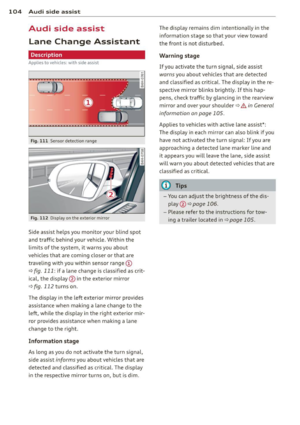 106
106 107
107 108
108 109
109 110
110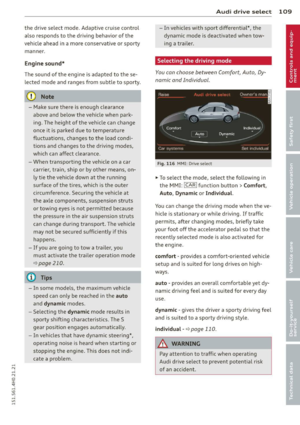 111
111 112
112 113
113 114
114 115
115 116
116 117
117 118
118 119
119 120
120 121
121 122
122 123
123 124
124 125
125 126
126 127
127 128
128 129
129 130
130 131
131 132
132 133
133 134
134 135
135 136
136 137
137 138
138 139
139 140
140 141
141 142
142 143
143 144
144 145
145 146
146 147
147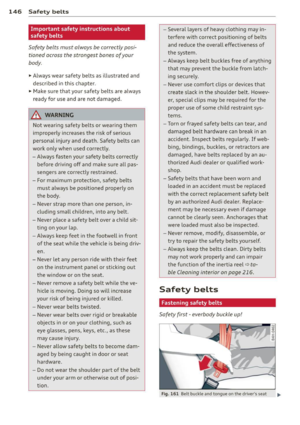 148
148 149
149 150
150 151
151 152
152 153
153 154
154 155
155 156
156 157
157 158
158 159
159 160
160 161
161 162
162 163
163 164
164 165
165 166
166 167
167 168
168 169
169 170
170 171
171 172
172 173
173 174
174 175
175 176
176 177
177 178
178 179
179 180
180 181
181 182
182 183
183 184
184 185
185 186
186 187
187 188
188 189
189 190
190 191
191 192
192 193
193 194
194 195
195 196
196 197
197 198
198 199
199 200
200 201
201 202
202 203
203 204
204 205
205 206
206 207
207 208
208 209
209 210
210 211
211 212
212 213
213 214
214 215
215 216
216 217
217 218
218 219
219 220
220 221
221 222
222 223
223 224
224 225
225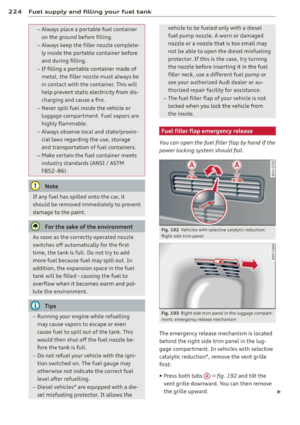 226
226 227
227 228
228 229
229 230
230 231
231 232
232 233
233 234
234 235
235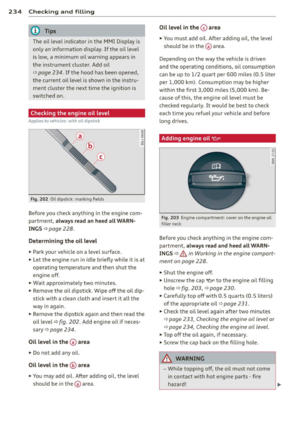 236
236 237
237 238
238 239
239 240
240 241
241 242
242 243
243 244
244 245
245 246
246 247
247 248
248 249
249 250
250 251
251 252
252 253
253 254
254 255
255 256
256 257
257 258
258 259
259 260
260 261
261 262
262 263
263 264
264 265
265 266
266 267
267 268
268 269
269 270
270 271
271 272
272 273
273 274
274 275
275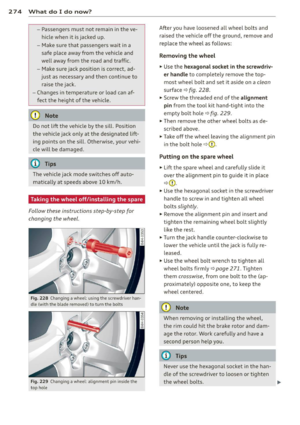 276
276 277
277 278
278 279
279 280
280 281
281 282
282 283
283 284
284 285
285 286
286 287
287 288
288 289
289 290
290 291
291 292
292 293
293 294
294 295
295 296
296 297
297 298
298 299
299 300
300 301
301 302
302 303
303 304
304 305
305 306
306 307
307 308
308 309
309 310
310 311
311






